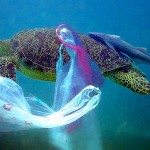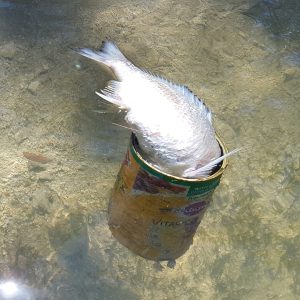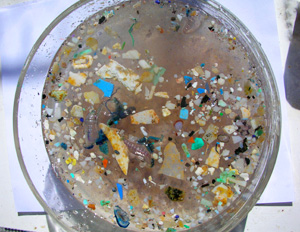One of the world’s most popular food sources is seafood. Our oceans provide a staggering amount of food for us and fishing is one of the world’s biggest hobbies. Millions of people every day go out and fish for fun or for work, to capture food that is part of most cultures staple diet.
So why then is the fishing industry responsible for a large percentage of debris in our oceans?
 Commercial fishing is responsible for so many marine deaths with ghost nets left drifting around waiting to catch unsuspecting marine life. Long liners drop kilometres of fishing line with hooks all along them catching marine life that then cannot be released. Turtles are a victim and I’ve often been asked why keeping turtles alive is important. Turtles are the only predator of Jelly Fish and Jelly Fish numbers around the world are rising at alarming rates. Jelly fish have been known to stop large cruise ships. One P&O vessel a few years ago sailing out of Brisbane Australia had to stop due to overheating issues. It had sucked up so many jelly fish that it had blocked the filters.
Commercial fishing is responsible for so many marine deaths with ghost nets left drifting around waiting to catch unsuspecting marine life. Long liners drop kilometres of fishing line with hooks all along them catching marine life that then cannot be released. Turtles are a victim and I’ve often been asked why keeping turtles alive is important. Turtles are the only predator of Jelly Fish and Jelly Fish numbers around the world are rising at alarming rates. Jelly fish have been known to stop large cruise ships. One P&O vessel a few years ago sailing out of Brisbane Australia had to stop due to overheating issues. It had sucked up so many jelly fish that it had blocked the filters.
The most alarming thing about marine debris, is that found from recreational fishermen. Bait bags, fishing line, lost tackle and ice bags make up a large percentage of debris found on beaches all over the world. The Australian Marine Debris Initiative Database shows that over 125,000m of fishing line has been removed from Amity Point on North Stradbroke Island in Queensland since 2012. That is just one location.
 In our clean-ups of the inland waterways on the Sunshine Coast in Queensland, in the first three months we have removed 535 bait bags and 347 other fishing items. We even found what I refer to as ‘Tinned Fish’. A small estuary fish that had stuck it’s head in a dog food tin, only to get it’s fins caught and it couldn’t get back out.
In our clean-ups of the inland waterways on the Sunshine Coast in Queensland, in the first three months we have removed 535 bait bags and 347 other fishing items. We even found what I refer to as ‘Tinned Fish’. A small estuary fish that had stuck it’s head in a dog food tin, only to get it’s fins caught and it couldn’t get back out.
Overall plastic is the main item everyone finds in beach and waterway cleaning all over the world. In Australia over 5 million pieces of plastic have been removed since 2012. The next highest material is foam/polystyrene at just under half a million pieces.
So why is it important that we keep plastics out of the ocean?
Plastics photo degrade and eventually end up as micro-plastics. In fact every piece of plastic ever created is still in existence in some form. They just get smaller and smaller until you can’t see them. That doesn’t mean they are gone. In fact they are in our food sources. In the ocean they end up so small they are the same size as plankton. In some areas in the world the number of micro-plastics outnumber plankton 46:1. Small fish eat these plankton, then bigger fish eat that and so on until our larger fish are effectively consuming plastic toxins.
 The latest statistics show that 30% of all large ocean fish will be found with plastic remnants in their stomachs. These can block the digestive system and cause all sorts of issues, however the more alarming statistic is that 90% of them now have plastic toxins in them. When we eat fish, we are consuming these plastic toxins.
The latest statistics show that 30% of all large ocean fish will be found with plastic remnants in their stomachs. These can block the digestive system and cause all sorts of issues, however the more alarming statistic is that 90% of them now have plastic toxins in them. When we eat fish, we are consuming these plastic toxins.
We all know the damage plastic toxins such as BPA are doing to us with cancer rates rising, Autism and ADHD cases increasing and all have been linked to plastics in our systems.
It is really easy to make a change. All you need to do is bring your fishing debris back with you from your fishing trips. Don’t leave it at the beach or throw it overboard. Don’t let it blow away. If you’ve taken it with you, bring it back. Otherwise one day, you might be eating your own trash.